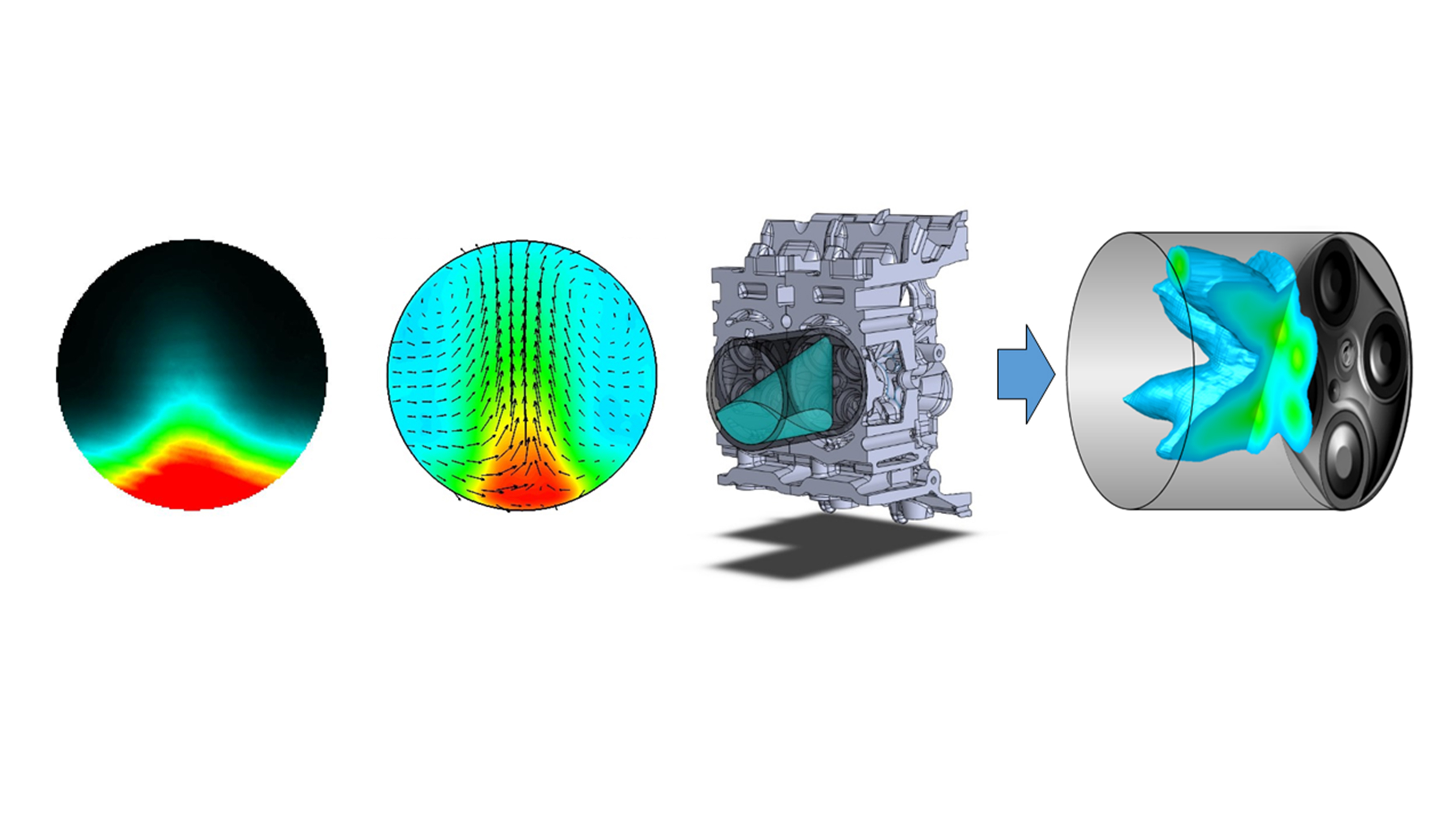Molecules Under the Laser Beam
IAV unlocks new characteristic variables with innovative laser measurement method
Precise knowledge of charge motion in the combustion engine is one way to reduce fuel consumption and emissions. Doppler Global Velocimetry in combination with 3D spray visualization produces exactly this information and provides the basis for precise simulation models. IAV is a pioneer in this field and has completely upgraded its test bench equipment.
Modern combustion methods demand specially adapted charge motion. To reduce fuel consumption, various valve lift strategies can be combined with different intake port concepts and valve seat geometries, such as the early intake valve closure (EIVC) strategy and late intake valve closure (LIVC) strategy combined with low-tumble port, tumble port and masking (one-sided masking of the intake valve at the valve seat). At the same time, the demand for shorter development times and lower development costs leads to an increasing use of simulation, with completely virtual engineering as the long-term objectove. This is why there is a need for modern methods to measure charge motion for validating the necessary CFD simulation models.
View inside the cylinder
This is exactly what Doppler Global Velocimetry (DGV) does in combination with 3D spray visualization (QLS). The laser beam is fanned out into a light sheet, it is directed into the flow and analyzed with a camera system or endoscope. The flow velocity is derived from the Doppler shift of the light frequency, even in 3D when using three light sheets. “We can now measure the flow field in the cylinder chamber, in the intake and exhaust system and in other components without any repercussions”, says Michael Günther, Head of the Charge Cycle and Combustion Methods department at IAV. The main use consists in combustion method optimization, with a focus on reducing fuel consumption and emissions so as to fulfill current and future requirements under RDE conditions. Among others, this demands the best possible mixture homogenization and also high turbulence inside the cylinder.

IAV has worked with DLR (German Aerospace Center) on developing and constantly improving the laser-optical test bench. “We have meanwhile acquired 17 years of experience with this method, putting us in a unique position”, says Dr. Thomas Seidel, Technical Consultant for Flow Measurement Technology at IAV. Upgraded hardware and software has brought the system completely up to date. The new laser with its particularly high light intensity now permits time-resolved measurements in addition to time- and phase-averaged measurements. “Besides measuring turbulence intensity, another important aspect is characterizing the turbulence frequency spectrum, thus opening another window for optimization”, Seidel reports.
One new feature consists in adjusting the laser frequency. It takes just a few seconds to change over from one frequency to another, instead of the minutes this used to take in the past. The camera system has also been upgraded, with high sensitivity and low background noise improving the quality of results.
Software supplies characteristic variables for engine simulation
The software has been greatly improved as well. It now processes both measured and also simulated flow fields. “This permits graphic representations of flow fields with the same layout, as well as computation of characteristic variables such as swirl and tumble number with the same algorithm”, Seidel explains. It is thus much easier to compare measurements and computations. “As a result, we can adapt the simulation model parameters to improve computations in the context of virtual engineering”, says Günther. Furthermore, the characteristic variables are fully compatible with common engine simulation software (such as GT Suite) where they act as input values.
The test bench is thus well equipped to deal with all current development activities, such as working on highly efficient, low-emission diesel and gasoline engines. For instance, the highly economical Miller combustion method in spark-ignition engines suffers greatly from turbulence losses in the cylinder. Laser-optical flow measurement provides detailed relevant information as prerequisite for optimizing this combustion method. Supplemented by spray pattern analysis, it is possible to visualize the distribution of air and fuel in the cylinder simultaneously, thus helping to reduce particulate matter and hydrocarbon emissions.
Full potential still to be realized
There is still plenty of potential to be realized. While in the past attention was concentrated on swirl and tumble, with the present-day focus on phenomena such as turbulence, in future it will also be possible to determine the distribution of pressure, temperature and density in the mixture. The measurements are in demand with OEMs all over the world. There is already a long list of customer projects, which is likely to get much longer thanks to the new test bench technology.
